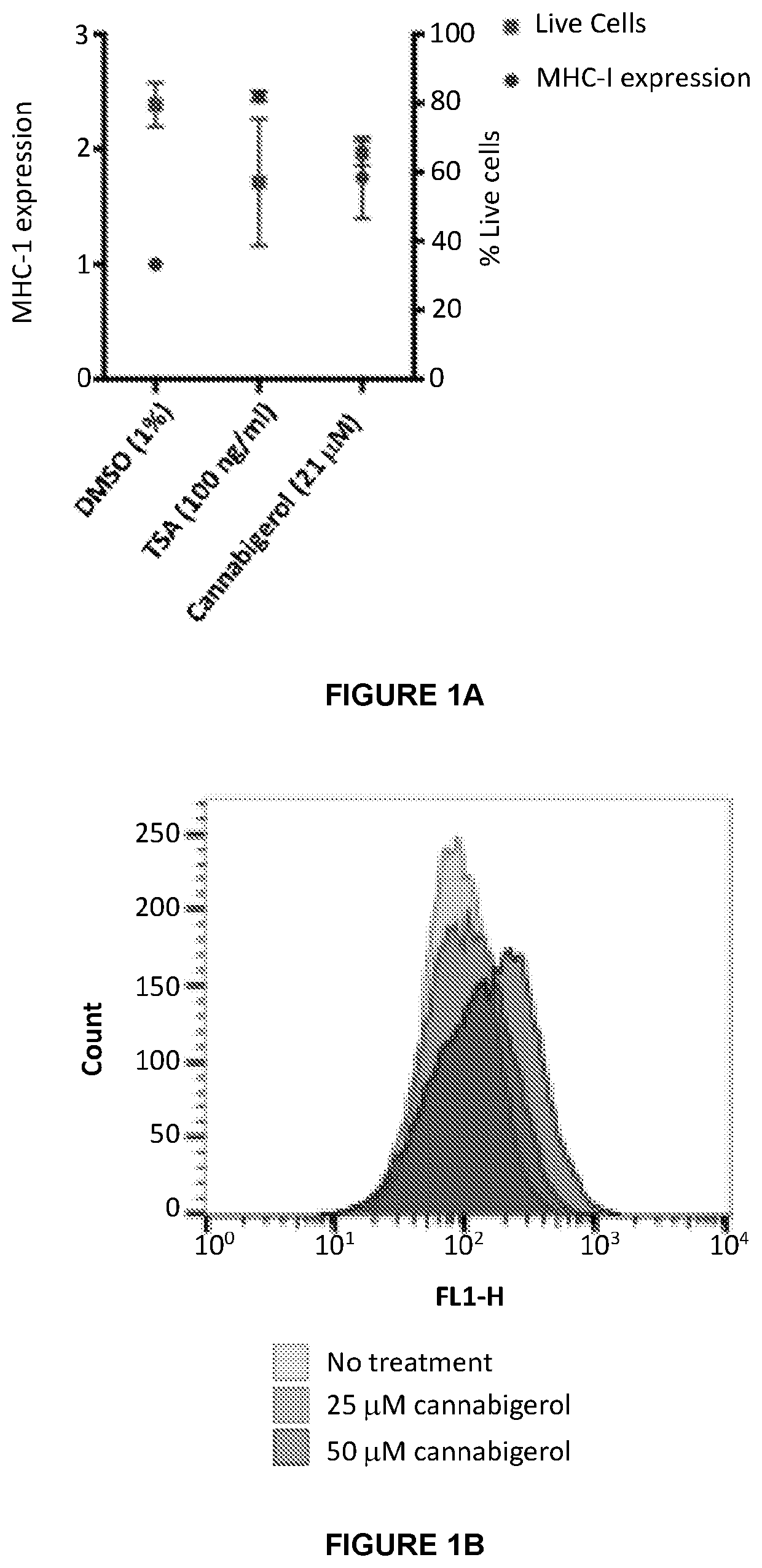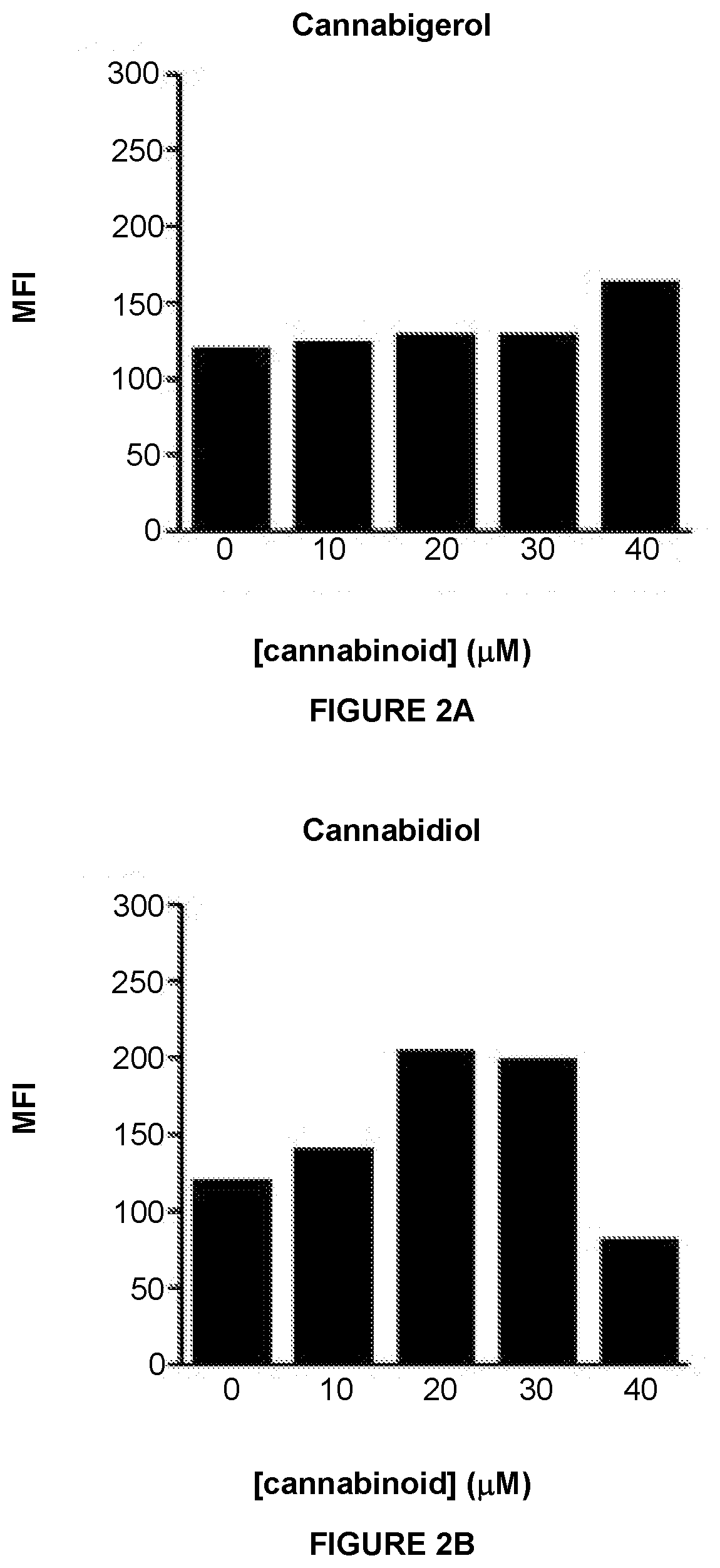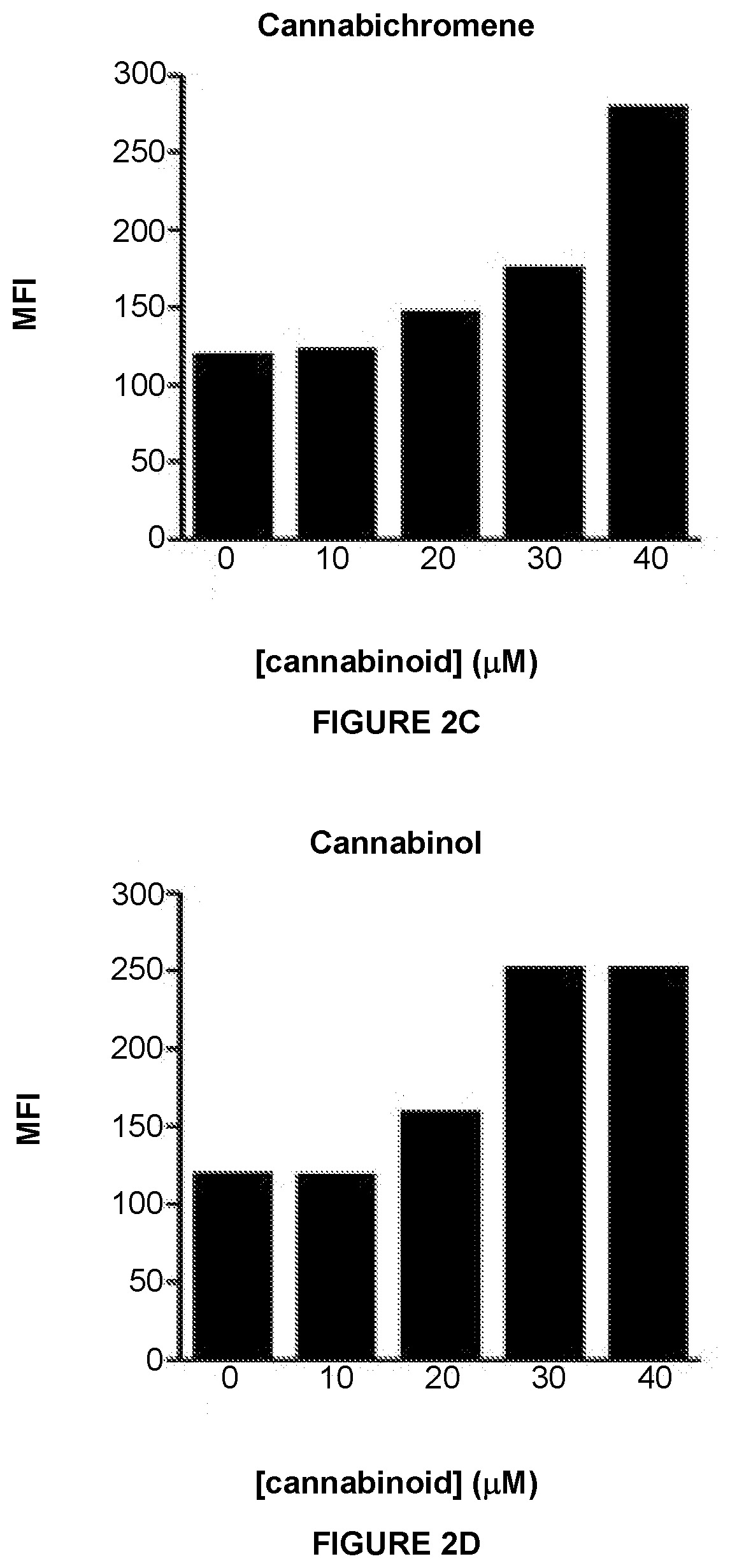Cannabinoids and derivatives for promoting immunogenicity of tumor and infected cells
a technology of cannabinoids and derivatives, applied in the field of pharmaceutical compositions, can solve the problems of not expressing sufficient mhc, publications that demonstrate mhc induction by cannabinoids, etc., and achieve the effects of promoting enhanced mhc class i surface expression, enhancing cell immunogenicity, and increasing the presentation of mhc class i surface molecules
- Summary
- Abstract
- Description
- Claims
- Application Information
AI Technical Summary
Benefits of technology
Problems solved by technology
Method used
Image
Examples
example 1
Cannabinoids Stimulate MHC Class I Expression in Mouse and Human Cancer Cells
[0254]Cannabigerol, a representative cannabinoid, was tested for its ability to also stimulate MHC class I expression in mammalian cancer cell lines. The mouse Lewis lung carcinoma cell line, A9, was treated with 21 μM of cannabigerol for 24 hours prior to flow cytometric analysis of cell surface expression of MHC class I expression levels using the MHC class I antibody W6 / 32 (Thermo Fisher). Control conditions included the vehicle, dimethyl sulfoxide (DMSO, 1%) alone, and 100 ng / ml of trichostatin A (TSA), a histone deacetylase inhibitor and known inducer of MHC class I expression in mammalian cells. The cells treated with cannabigerol responded with a 1.8-fold increase in MHC class I expression and limited cell death relative to the DMSO control (FIG. 1A). The positive control, TSA, stimulated expression by 2.4-fold.
[0255]Cannabigerol was also tested for its capacity to induce MHC class I expression in a ...
example 2
MHC-I Induction COLO 205 Assay
[0256]A panel of synthetic cannabinoids (Cayman Chemical, #9002891) was tested for MHC class I-inducing capability in COLO 205 cells as described above. COLO 205 cells were treated with the compounds at a concentration of 35 μM and evaluated for cell surface MHC class I expression after 48 hours. Cells were harvested, stained with MHC-I mAb W6 / 32 (Thermo Fisher). MHC-I expression was determined by flow cytometry. The results are reported in Table 4. Numerous compounds induced MHC-I expression by the COLO 205 cells, with a total of 53 achieving ≥3-fold induction.
TABLE 4InductionExampleCompoundFold6(1-((1-methylazepan-3-yl)methyl)-1H-indol-3-5.60yl)(naphthalen-1-yl)methanone7(2-iodo-5-nitrophenyl)-(1-(1-methylpiperidin-2-ylmethyl)-5.591H-indol-3-yl)methanone8ethyl (1-(4-fluorobenzyl)-1H-indazole-3-carbonyl)-L-5.50valinate9quinolin-4-yl 1-(cyclohexylmethyl)-1H-indole-3-5.41carboxylate10quinolin-4-yl 1-pentyl-1H-indole-3-carboxylate5.0211(S)-N-(1-amino-1-ox...
example 3
MHC-I Expression Restoration in Cancer Cells
[0257]MHC-I expression may be restored in cancers, such as those with intact antigen processing machinery (APM) genes. Various human and mouse cancer cell lines were treated with dose titrations of recombinant human and mouse IFN-γ, respectively. The cells were incubated with IFN-γ for 48 hours in a humidified chamber at 37° C., stained with fluorescent haplotype-appropriate MHC-I antibody, then signal was determined by flow cytometry. Cancers represented in this experiment include brain (SK-N-MC), breast (4T1, EMT6), colorectal (COLO 205, SNU-C1, DLD-1, LS123, LS411N, LoVo, CT26, MC38), kidney (Renca), lung (NCI-H146, LLC), lymphoid (A20), and skin (A431, SK-MEL-2, B16F10). IFN-γ induced MHC-I expression in a dose-dependent manner in 6 / 10 (60%) human and 6 / 9 mouse (67%) cell lines. These numbers are consistent with the previously reported values and demonstrate that the APM is intact and can be induced in many cancers. The results are fou...
PUM
| Property | Measurement | Unit |
|---|---|---|
| concentration | aaaaa | aaaaa |
| concentration | aaaaa | aaaaa |
| concentration | aaaaa | aaaaa |
Abstract
Description
Claims
Application Information
 Login to View More
Login to View More - R&D
- Intellectual Property
- Life Sciences
- Materials
- Tech Scout
- Unparalleled Data Quality
- Higher Quality Content
- 60% Fewer Hallucinations
Browse by: Latest US Patents, China's latest patents, Technical Efficacy Thesaurus, Application Domain, Technology Topic, Popular Technical Reports.
© 2025 PatSnap. All rights reserved.Legal|Privacy policy|Modern Slavery Act Transparency Statement|Sitemap|About US| Contact US: help@patsnap.com



